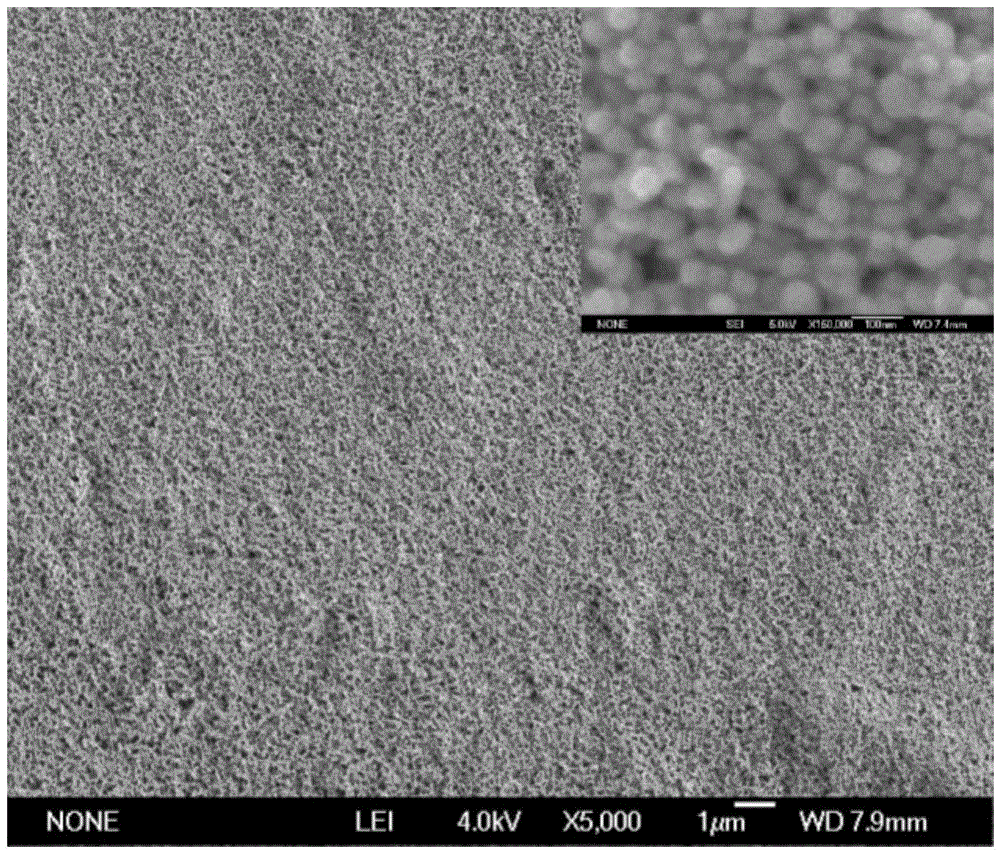In-situ microextraction and portable Raman spectrometer combined method for determining polycyclic aromatic hydrocarbon
A Raman spectrometer and polycyclic aromatic hydrocarbon technology, applied in the field of analytical chemistry, can solve the problems of long analysis time, tedious process, loss of sample impurities, etc., and achieve the effect of simple measurement method, broad application prospects, and avoiding the introduction of errors
- Summary
- Abstract
- Description
- Claims
- Application Information
AI Technical Summary
Problems solved by technology
Method used
Image
Examples
Embodiment 1
[0037] A method for in-situ microextraction-Raman spectrometer combined determination of polycyclic aromatic hydrocarbons on food contact materials, the steps are as follows:
[0038] (1) Silver nanoparticles surface modified thiol: absorb 0.5mL propanethiol concentration to 1×10 -4 mol / L methanol solution was added dropwise to a concentration of 2.51×10 -11 mol / L silver nanoparticle solution 10ml, stirring reaction time 10min. Connected by Raman spectrometer to obtain the silver nanoparticle solution with surface modification of mercaptan;
[0039] (2) Micro-extraction of polycyclic aromatic hydrocarbons in food-contact materials: take 5 μL of methanol and drop it on the surface of food-contact materials for 2 minutes for micro-extraction to obtain an extract solution;
[0040] (3) Raman spectrometer detects polycyclic aromatic hydrocarbons: the surface-modified silver nanoparticle solution with thiol prepared in step (1) is concentrated 10 times and mixed with the extract s...
Embodiment 2
[0041] Embodiment 2: with the method of embodiment 1 in-situ microextraction-Raman spectrometer joint determination polycyclic aromatic hydrocarbons on food contact materials,: difference is: the alcoholic solution of mercaptan in step (1) is ethanethiol concentration 1×10 -4 mol / L methanol solution.
Embodiment 3
[0042] Embodiment 3: with the method of embodiment 1 in-situ microextraction-Raman spectrometer joint determination polycyclic aromatic hydrocarbons on food contact materials,: difference is: the alcoholic solution of mercaptan in step (1) is n-butanethiol The concentration is 1×10 -4 mol / L methanol solution.
PUM
| Property | Measurement | Unit |
|---|---|---|
| particle diameter | aaaaa | aaaaa |
Abstract
Description
Claims
Application Information
 Login to View More
Login to View More - R&D
- Intellectual Property
- Life Sciences
- Materials
- Tech Scout
- Unparalleled Data Quality
- Higher Quality Content
- 60% Fewer Hallucinations
Browse by: Latest US Patents, China's latest patents, Technical Efficacy Thesaurus, Application Domain, Technology Topic, Popular Technical Reports.
© 2025 PatSnap. All rights reserved.Legal|Privacy policy|Modern Slavery Act Transparency Statement|Sitemap|About US| Contact US: help@patsnap.com



